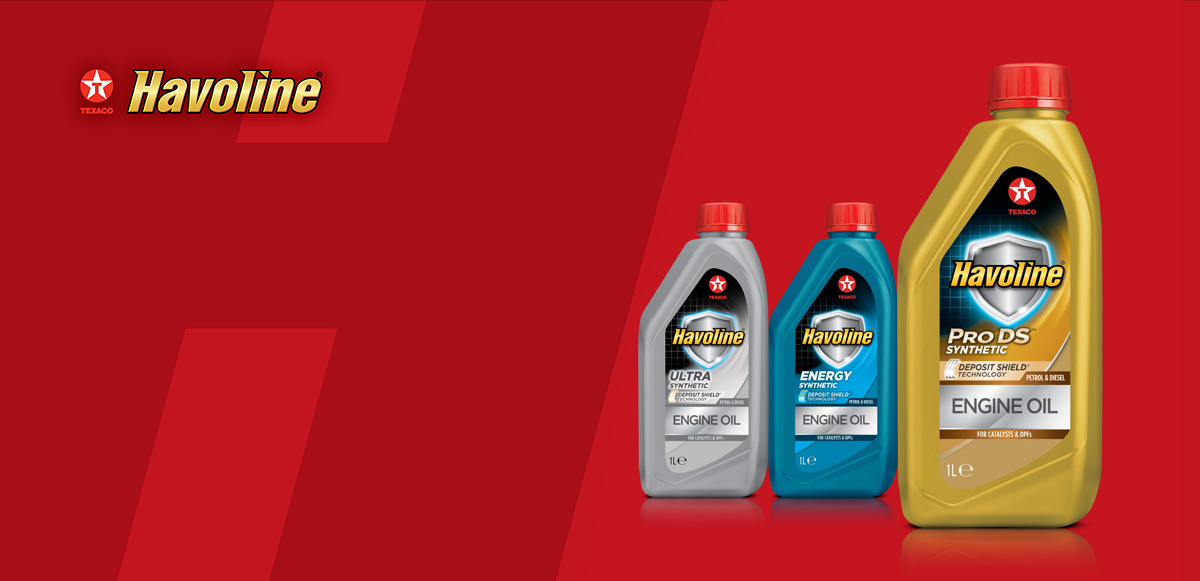Havoline Oils – Part Two


Lubricants are an essential part of any engine’s wellbeing, but do we really understand or appreciate the technology behind the products? The Texaco Product & Technology team takes us back to basics.
The principal function of engine oil is to reduce the friction between the moving parts. Friction between two surfaces generates heat, which not only potentially causes wear, but may also result in reduced engine life and power loss of around 30% to 50%. Engine oils do have other important roles as well, including cooling, corrosion protection, maintaining cleanliness, removing wear debris and contaminants, preventing deposit formation and sealing the lubrication system to prevent fuel and blowby gas from entering.
What is the best advice for consumers to get the most out of motor oils?
There are three basic rules to ensure you get the most out of your engine oil:
- Follow the vehicle manufacturers’ instructions: use the correct engine oil and drain at the recommended intervals
- Regularly check the engine oil level and engine oil condition
- Seek professional advice from your garage or technician
In addition to the type of engine oil to be used, many car manufacturers recommend maintenance intervals, in terms of mileage or months/years during ‘normal use’. Drivers that regularly cover shorter distances or undertake more frequent start/stop journeys may find that they need to change their oil earlier due to the accumulation of water or fuel dilution, which may cause more wear on engine parts due to the lower viscosity of the engine oil.
The use of fuel with a higher sulphur content in certain geographical areas or fuel with a certain biofuel content may also shorten the life of the engine oil due to the higher levels of acid that occur. This acidification not only can adversely affect the engine oil, but also allows for increased corrosion of engine components.
What do the letters and numbers in motor oil classification mean? For example, 10W-30
The Society of Automotive Engineers were originally responsible for developing a system to classify engine oils, this was known as the SAE Engine Oil Viscosity Classification J300.
SAE J300 contains two sub-classifications, a “W” grade relating to the low temperature flow properties of the engine oil and a “non-W” grade designation relating to viscosity operating temperature properties. A W-grade and a non-W grade are sometimes referred to respectively as ‘Winter’ grade and ‘Summer’ grade.
Oils which meet the requirement of only one sub-classification are referred to as single or mono-grade oils for example SAE 10W or SAE 30. Oils that are labelled as meeting the requirements of both a W and a non-W designated grade are called multigrade oils such as 10W-30.
The numbers before and after the “W’ relate to the viscosity of the oil. The number before “W”, represents the oil viscosity at low temperatures and the number after the “W”, how thick the oil is during the engine’s normal operating temperature.
We always advise drivers to follow the instructions provided by the vehicle manufacturer. They will specify which performance profile the engine oil needs to meet for each of their engines. In most cases, the manufacturer will identify products that meet their specifications to ensure that the engine oils used are optimised for their engines.
Many European manufacturers will also mention ACEA (the European Automobile Manufacturers' Association) standards as a minimum performance level or as a backup: if you have a problem and you don't find an oil with the appropriate manufacturer’s specification, you may consider using an oil from a specific ACEA category to help the engine last until your next oil drain, which should then be as soon as possible.
The best advice is always to consult your vehicles manual. Often, manufacturers suggest refuelling before the vehicles range falls to 50 km or less, to avoid equipment damage or poor operation. If the manual does not indicate when to refuel, it is worth remembering that allowing your fuel tank to run low can cause sediment accumulation at the bottom of the tank which clogs the fuel filter or causes the fuel pump to become exposed and overheat.
Further information on the full range of Texaco Havoline products can be found here.































